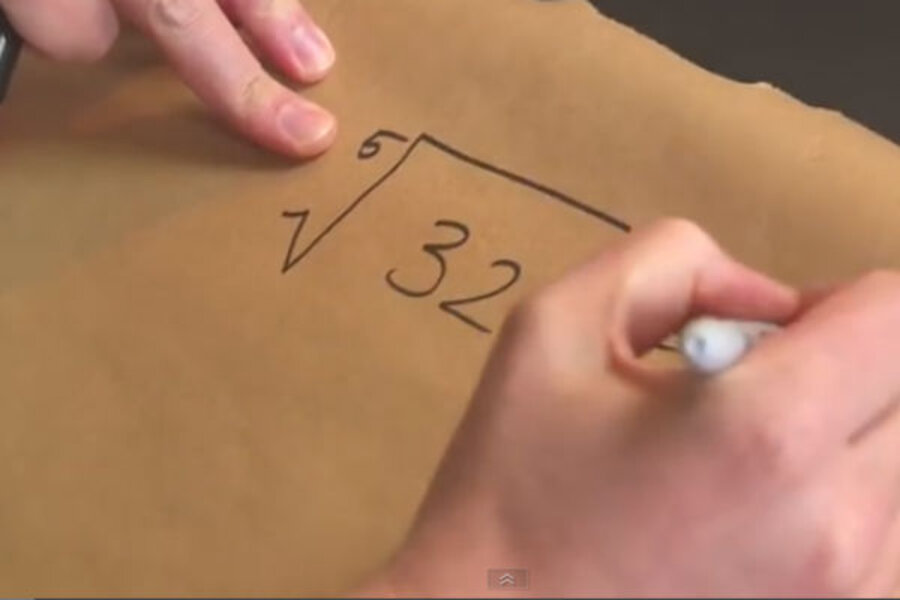Calculating women: How to get more girls into math
Loading...
Women have come a long way from being seen only as pie bakers to today’s pi pioneers.
This Friday is Pi Day, a celebration that falls on March 14 each year. Pi Day celebrations would be well served if parents take time to review with their kids that mathematics is for everyone, especially those who love puzzles.
Ruth Charney, president of American Women in Mathematics (AWM), is keen to solve one word problem in particular: Woman + Mathematician = Mathematician and not “Woman mathematician.”
“We really want to be mathematicians, not ‘Women mathematicians,’ ” Ms. Charney explains during a telephone interview from her office at Brandeis University Friday. “We would like to move past that gender distinction.”
Another problem to solve is getting girls and young women through key transition periods in life where they most commonly abandon the pursuit of math and other STEM disciplines.
“We want girls to see math as a viable and attractive option because it is,” Charney says. “It’s a wonderful job. It’s a wonderful place to be for women today.”
Charney, the mother of two adult sons, has some solid advice and a few cheat sheets for parents and teachers who want to encourage a child’s interest in math.
“I think the way to go when talking to children is to show that math is really about puzzle solving, not just doing some rote equations,” Charney says. “Too often, it just becomes a competition to see who can solve and equation the fastest.”
Apparently, in Charney’s experience, girls do not blossom via a competitive atmosphere, as boys often do.
“For many of us, it’s more about working out a puzzle – finding a solution – than some rapid calculation,” Charney said. “That’s where having camps and events for girls only can be very useful, because they help build confidence and self-esteem.”
Once that base of confidence is solid, Charney says young women have no issue with working shoulder-to-shoulder with men in educational and work environments.
As part of building that base of confidence for girls and boys at the K-12 level, Charney highly recommends joining a local Math Circle.
“This is not just reading problems out of books, but finding some very engaging and exciting problems to solve,” Charney says.
Another confidence builder and base-broadening experience is a math summer program designed to expose children to really interesting problems to solve.
The AWM website lists summer programs specifically for girls.
For cultivating math fun at home, Charney personally enjoys watching the engaging video lessons on Numberphile.
Websites she suggests for finding the puzzle fun in math include Cut the Knot, Barcodes Inc., High School Math Forum, and eThemes.
Another great video resource is TED ED, which has numerous lessons on STEM topics, including several videos on math and physics, composed and narrated by women.
While Charney is still a fan of old-school flash cards, she adds, “I think it’s good to have those kinds of resources for children so they can find the enjoyment in math and see how much scope there is to math beyond just seeing how fast you can solve an equation.”
Although the AWM is leading the charge for women toward the future of math, the organization draws on the experiences of pioneering women of this STEM discipline, via the value of mentoring.
Many of the most famous women in math were not allowed to attend school above the elementary level and so instead relied on male mentors to help them gain education and position in mathematics, according to The Smithsonian’s website on Women in Mathematics History.
The AWM has created a program to match mentors, both men and women, with girls and women who are interested in mathematics or are pursuing careers in mathematics.
While there are still more doors for women to open in mathematics, it’s nice to know that we no longer need to rely on men to hold them open.






